 |
Edwin M. Stone, MD, PhD
Лекция им. Франческетти: “Curing Inherited Blindness” Доклад: Update on Genetic Testing of Retinitis Pigmentosa
My research seeks to understand how small variations in the genes of human beings can result in large variations in their vision. I am the director of the Institute for Vision Research which includes 26 faculty and 125 staff. I and my collaborators at the University of Iowa, have mapped and/or cloned dozens of human disease genes including: three glaucoma genes (MYOC, FOXC1, and familial cavitary optic disk anomaly), five genes for macular disease (Best disease, pattern dystrophy, Stargardt-like dominant macular dystrophy, malattia Leventinese, and fibulin-5-associated age-related macular degeneration), dominant stromal corneal dystrophy, Wagner disease, erosive vitreoretinopathy, the enhanced S cone syndrome, and achromatopsia. I have collected over 50,000 DNA samples from patients with various inherited eye diseases and have developed high-throughput methods for screening these patients for disease-causing mutations in candidate genes.
|
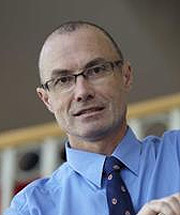 |
David Mackey, MD
Доклад:
Ophthalmic success with Genome Wide Association Studies (GWAS)
In 2012 Professor Mackey was a co-author on a major review identifying reduced time outdoors as a risk factor for myopia.
In June 2011 Professor Mackey was a co-author on a paper identifying CDKN2BAS and TCM01 as genes associated with glaucoma. This builds on earlier glaucoma gene discoveries: CAV1 / CAV2 in 2010 and MYOC in 1997. Hereditary eye diseases, particularly clinical and molecular genetic aspects of:
- Hereditary Optic Atrophy (Leber‘s and ADOA), Glaucoma
- Age-related macular degeneration, retinal dystrophies and retinal detachment
- Strabismus and Ptosis, Corneal dystrophies, Keratoconus & Refractive errors
- Twins Eye Studies, Norfolk Island Eye Study, Raine Eye Health Study
|
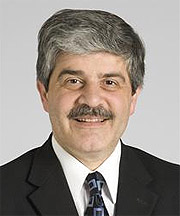 |
Elias Traboulsi, MD
Лекция им. Francois:
"Fibrillinopathies and related disorders - Molecular considerations and ocular phenotypes"
Доклад:
Basics of Genetics для секции пациентов
Область профессиональных интересов:
childhood glaucoma, congenital cataracts, genetic eye diseases, ocular diseases of children, residency education, retinoblastoma, Strabismus |
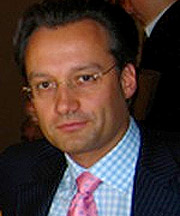 |
Bart Leroy
Genetic screening of LCA in Belgium: predominance of CEP290 and identification of potential modifier alleles in AHI1 of CEP290-related phenotypes. Hum Mutat. 2010 Aug 3.
CEP290, a gene with many faces: mutation overview and presentation of CEP290base. Hum Mutat. 2010 Aug. |
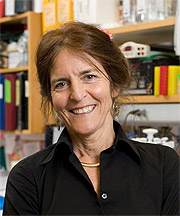 |
Jean Bennett, MD, PhD
Доклад:
Gene therapy for Leber congenital amaurosis
Jean Bennett studies the molecular genetics of inherited retinal degenerations with the idea of using this knowledge to develop rational approaches for treatment of these diseases. Target diseases include retinitis pigmentosa and age-related macular degeneration. Studies in her laboratory range from identifying the molecular bases of retinal degenerations, generating animal models for these diseases, evaluating novel vectors for retinal gene transfer, characterizing immune responses to gene transfer, developing novel gene-based approaches for reversal of sensory loss, and rescuing vision in animal models through gene based treatments. Dr. Bennett was one of the first investigators to use viral vectors to deliver transgenes to specific cells in the retina and also led the first team to demonstrate proof-of-principle of ocular gene therapy. Dr. Bennett is Scientific Director for the Phase I/II human clinical trial evaluating the safety and efficacy of gene transfer in Leber congenital amaurosis (LCA) due to RPE65 mutations. This trial is being carried out at The Children's Hospital of PHiladelphia (CHOP). This was the first study to report the exciting efficacy results in all twelve subjects, including 5 children.
|
 |
Albert Maguire, MD
Университет Пенсильвании
Доклад:
How do you deliver gene therapy to the eye?
|
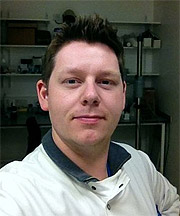 |
Alun Barnard, PhD
Доклад:
Gene therapy for choroideraemia
After completing a BSc in Biology at Imperial College London, Alun gained a PhD in Neuroscience from the Faculty of Life Sciences, University of Manchester. Following a career development fellowship at the Mammalian Genetics Unit, MRC Harwell, he joined the University of Oxford in 2009. Currently he is a Senior Postdoctoral Researcher in a group dedicated to finding new treatments for blindness, particularly in patients with incurable retinal diseases, through clinical and laboratory research. |
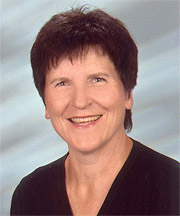 |
Birgit Lorenz
Доклад:
Retinal dystrophies: defining new endpoints for therapeutic trials
Professor of Neuroophthalmology and Strabismus, (W3) and Chairman, Justus Liebig university Giessen, Director Dept. of Ophthalmology, Universitaetsklinikum Giessen and Marburg GmbH, Giessen Campus. Подробная биография: здесь She is editor of 3 books and has published more than 180 peer-reviewed papers. Her actual research interests and research activities include genotyping and genotype-phenotype correlation of genetic eye diseases, gene therapy of hereditary retinal disorders; electrophysiology, psychophysics and imaging of hereditary eye diseases; wide-field-digital imaging and telemedicine for detection and quantification of acute retinopathy of prematurity, paediatric neuroophthalmology, pathophysiology of strabismus disorders, and pathophysiology of congenital and juvenile cataracts. She has already hosted several ICO fellows. Автор книги Pediatric ophthalmology
|
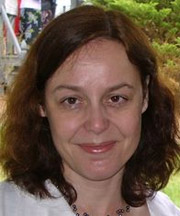 |
Isabelle Audo
Доклад: Генетическая терапия болезни Штаргардта
Gene therapy for Stargardt disease
With my colleague, Dr Christina Zeitz, our group focuses on inherited stationary and progressive retinal diseases to decipher their genetic mechanisms. Studies include screening of known genes as well as linkage and candidate gene analysis in phenotypically well-characterized patients. Further functional analyses are conducted to better understand the role of new genes. These findings combined with exhaustive genotype-phenotype correlations deliver the basis for preparation of patients for future clinical trial.
http://www.vision-research.eu/fileadmin/user_upload/researcher/a/audo-isabelle-cv_full.pdf
- electrophysiology, psychophysics, autofluorescence, OCT
- genotyping microarray, sequencing, linkage analysis
- cellular biology and biochemical techniques, generation and characterization of animal models
|
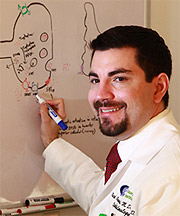 |
Mark Pennesi, MD, PhD
Доклад:
Gene therapy for Usher syndrome type 1B
Dr. Pennesi's interest in degenerative retinal disorders began shortly after his first year in college, when he spent a summer working at the Retina Foundation of the Southwest. There he worked under the supervision of Dr. David Birch and saw patients with retinal degenerations such as retinitis pigmentosa as well as studying animal models of this disease.
Dr. Pennesi recently joined the faculty of the Casey Eye Institute as an Assistant Professor in Genetics and is a member of the Oregon Retinal Degeneration Center. He also serves as the Head of the Ophthalmic Imaging Department at Casey.
The Foundation Fighting Blindness has recognized Dr. Pennesi with a Career Development Award to support his ambition to conduct transitional research that will bring treatments for diseases such as retinitis pigmentosa from the laboratory to the clinic. His research focuses on developing novel treatments for inherited retinal diseases. He is currently exploring the potential of a new class of drugs to up regulate protective growth factors in the retina.
|
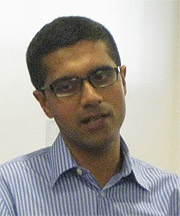 |
Mandeep Singh
Доклад:
Stem cell therapy for retinal dystrophies
http://rspb.royalsocietypublishing.org/content/278/1721/3009 |
| |
Petra Liskova, MD, PhD
Прага, Чехия
Доклад:
Harboyan syndrome in a Czech proband caused by a novel homozygous nonsense mutation in SLC4A11
http://unce204011.lf1.cuni.cz/index.php?content=personal&person=liskovapetra |
| |
Irina Balikova
Доклад:
Ocular features of microcephaly with or without chorioretinopathy, lymphedema, or mental retardation (MCLMR) syndrome due to KIF1 mutations |
| |
Said Shamieh
Доклад:
Next-generation sequencing panel to determine the real prevalence for gene defects underlying rod-cone dystrophies |
| |
Nicky Ragge, PhD
Доклад:
Eye Developmental Anomalies and the Vitamin A pathway
Anophthalmos, Microphthalmos, and Coloboma in the United Kingdom: Clinical Features, Results of Investigations, and Early Management, 2011
Prof Nicky Ragge trained at the University of Cambridge and attended clinical school in Oxford. She qualified in 1984. After house jobs, she had some basic training in Paediatrics, then trained as an ophthalmologist. She studied neuro-ophthalmology, paediatric ophthalmology and strabismus at UC, San Francisco, and Smith-Kettlewell Eye Institute. studied paediatric ophthalmology and retinoblastoma at Childrens Hospital Los Angeles and set up a research programme on neurofibromatosis (NF) types 1 and 2, on eye findings and molecular genetics. She gained her US qualifications. After completing her MD at Cambridge, she completed her ophthalmology training at Moorfields and the Western Eye Hospitals and a further paediatric ophthalmology Fellowship at Great Ormond St Hospital. She then trained in oculoplastics and adnexal surgery at Moorfields Eye Hospital. She participated in a multidisciplinary clinic for children with anophthalmia and microphthalmia at Moorfields, and developed a research programme into the genetics of developmental eye anomalies. Her work in this field led to a Senior Surgical Scientist Award at Oxford University and several publications characterising genetic eye conditions. She has also trained in clinical genetics and is accredited in both Ophthalmology and Ophthalmic Genetics. |
| |
Lisa Kearns, orthoptist
Доклад:
Losing the "middle man" in genetic eye disease: the current scope of direct to consumer testing in ophthalmology Familial retinal detachment associated with COL2A1 exon 2 and FZD4 mutations
Thomas L Edwards MBBS PhD1,
Benjamin O Burt FRANZCO4,
Graeme CM Black FRCOphth DPhil5,6,
Rahat Perveen BSc MSc5,6,
Lisa S Kearns BOrth1,
http://www.cera.org.au/our-research/research-areas/clinical-genetics |
С каждым из этих специалистов можно связаться и задать вопрос в области его/ее экспертности